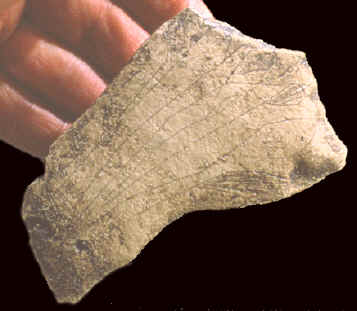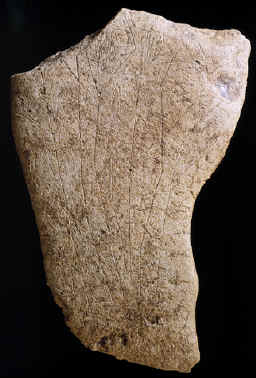|
ENGRAVED STONE This engraved stone was found at a depth of about 3.5 feet (106.7 cm) on the Gault site by David Olmstead. A complete and undamaged Clovis point was also found nearby. This engraved stone has been referred to as the "Wheatstone" because the design seems to illustrate growing plants. Both sides are engraved with five to eight vertical lines that extend upward from a horizontal line. Each vertical line was then engraved with a diamond on the end. Some of the diamonds are filled with vertical parallel lines. This engraved stone measures 4 1/16 inches (10.2 cm) long, 2 5/8 inches (6.6 cm) wide and 5/16 on an inch (7 mm) thick. |


